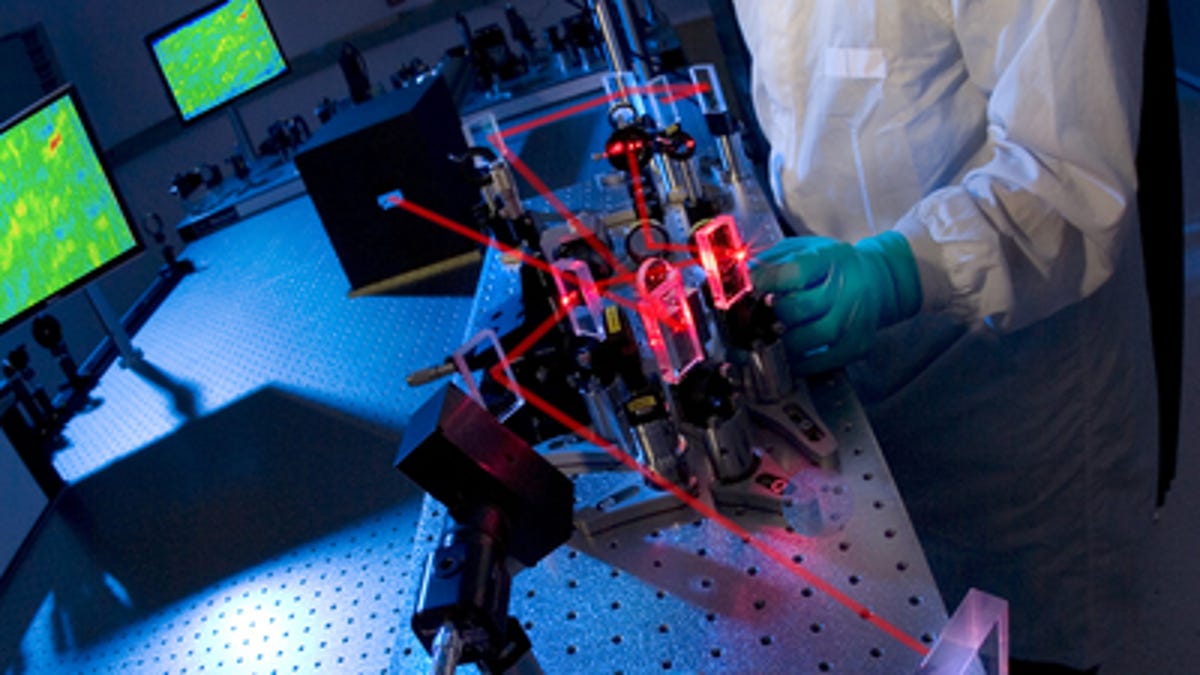Laser weapon design hits 100-kilowatt target
Northrop Grumman strings together seven laser systems to get a single beam at 105.5 kilowatts, and thus enters into weapons-grade territory.

From the week gone by on the directed-energy weapons front: defense contractor Northrop Grumman reported that it got a solid-state laser to fire a beam with a potency of 105.5 kilowatts.
For the ray-gun wing of the military-industrial complex, the 100-kilowatt threshold is a major milestone, marking the entry point to weapons-grade laser weapons. Adding to the appeal is that solid-state lasers are much more compact, and less noxious, than chemical laser systems such as the one in the works for the 747-centric Airborne Laser.
The technical details of Northrop's achievement break down this way, starting with a modular, "building block" approach that bodes well for scalable systems, the company said:
For building blocks, the company utilizes "laser amplifier chains," each producing approximately 15kW of power in a high-quality beam. Seven laser chains were combined to produce a single beam of 105.5 kW. The seven-chain JHPSSL laser demonstrator ran for more than five minutes, achieved electro-optical efficiency of 19.3 percent, reaching full power in less than 0.6 seconds, all with beam quality of better than 3.0.
Adding an eighth chain that the system was designed for would increase laser power to 120 kilowatts, Northrop says.
Where this test saw five minutes of continuous operation for the laser, altogether the system has been operated at above 100 kilowatts for a total duration of more than 85 minutes.
The efforts are part of the Pentagon's Joint High Power Solid State Laser (JHPSSL) program.
Even though 100 kilowatts has long been the "proof of principle" sought for weapons systems, Northrop says that "in fact, many militarily useful effects can be achieved by laser weapons of 25 kW or 50 kW, provided this energy is transmitted with good beam quality, as our system does."
Of course, this is still a laboratory laser system and not a field-tested, ruggedized product. "It is still a little heavy and a little big," Dan Wildt, vice president of Northrop's directed energy systems program, told the LA Times.
That's probably a significant understatement. Says Noah Shachtman at Wired's Danger Room blog of the news from Northrop:
Does that mean energy weapons are a done deal? Hardly. There are still all sorts of technical issues--thermal management and miniaturization, to name two--that have to be handled first. Then, the ray gunners have to find the money. The National Academies figure it'll take another $100 million to get battlefield lasers right.
In a separate post, Shachtman reports on what's involved in getting specific laser systems ready to go over the next several years.
Earlier this year, Boeing said that it had used a "kilowatt-class" solid-state laser to shoot down a UAV from a ground-based system. The company hopes that the Airborne Laser, meanwhile, will do its first-ever aerial target shoot sometime in 2009.

